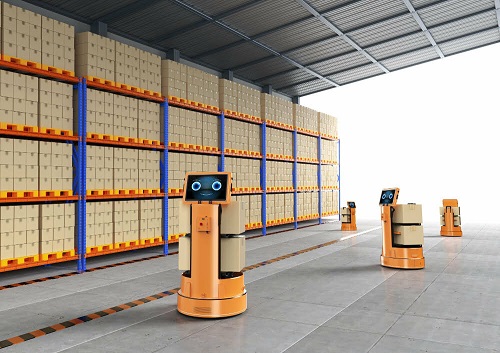The modern business world is heavily dependent on technology. The main reason for mechanization and automation is saving time and enhancing production efficiency.
Miniload automated racking systems are storage units specially designed to provide loading and fulfilment solutions in small storage facilities.
Primarily, miniload racking systems employs stacker crane technology to reduce human interaction with goods in a warehouse.
With such a powerful technology, e-commerce fulfillment warehouses can cut down labor costs and increase accuracy and efficiency; less human interaction translates to less errors and product damage.
In this article, we are going to discuss how miniload automated racking systems work; we will also discuss some of the notable features of the miniload racking system. Furthermore, this article will highlight some pros and cons of installing miniload racking systems in your storage facility.
What are Miniload Automated Racking Systems?
Miniload racking systems are unique because they are fully automated; goods are stored and retrieved automatically. Intrinsically, there are several conveyor belts linking the racking shelves to the working area.
The goods on the racks are transported to the workers using the conveyor belts. Additionally, the miniload system has a code identification software that identifies special codes on the storage boxes.
Once a worker is done packing the goods inside the storage box (usually cartons), the sensors record the unique code on each box and registers it in a database; the unique code helps the miniload system to identify which item to retrieve once an order is placed.
Miniload racking systems are very efficient for storing numerous records of small-sized items in a warehouse.
Thus, the miniload systems is ideal for an e-commerce store that handles many customer orders for small items, such as a toy distribution center.
What are the Characteristic Features of Miniload Automated Racking Systems?
It would be best to consider several factors such as the amount of goods, available storage space, and movement frequency of the goods before installing shelving and racks systems in your warehouse.
As such, miniload racking systems are a viable storage solution if you want to fully automate operations in your storage facility.
Some of the characteristic features that make miniload racking systems an idea storage solution for your warehouse include:
- Compactness
Miniload racking operational systems are fixed to stand as one compact storage unit. Hence, the miniload racking system enables you to save storage space in your warehouse, increasing the number of individual units you can install.
Additionally, the racks and decking platforms operate automatically, saving loading time and increasing production efficiency.
- High Storage Capacity
Although miniload storage units are compact and look small, they offer high storage space per unit.
Essentially, the storage platforms of a miniload racking system are partitioned precisely to fully maximize vertical space. Thus, the higher the miniload racking unit spans, the more goods you can store.
- Precise Loading and Picking
Most people receive the wrong products after purchasing them online. Incorrect deliveries are as a result of human errors during loading, picking, packaging, or fulfilment. Consequently, these errors cause significant losses and returned orders.
To eradicate the chances of errors, you can install miniload automated racking systems in your warehouse. Miniload racks have automatic conveyors or hydraulic arms that help retrieve the exact item ordered in the system.
Thus, order picking accuracy helps reduce losses and save fulfilment time, satisfying your customers more.
- Flexibility
You can stock a wide variety of goods on miniload racking systems. The flexible decking platform design allows you to store goods of different shapes, size, and weight.
- Inventory Management
One of the unique features of a miniload racking system is the ability to track inventory. It would cause great inconvenience if your warehouse goes out of stock without your knowledge.
Hence, the miniload system is integrated to keep tally of all the goods stored and retrieved. Therefore, you can easily manage your warehouse’s stock inventory.
What are the Pros and Cons of Installing Miniload Racking Systems?
Pros:
- The compact size of miniload racking systems allows you to not only install multiple storage units in your warehouse but also increases your storage space vertically.
- Miniload racks increase production efficiency and reduce workloads by automating operations.
- You require minimal manual supervision to oversee operations.
- Miniload racks offer you a hassle-free inventory management experience.
Cons:
- While miniload racking systems are ideal for storing small-sized goods, they would not be suitable for larger products.
- You require a significant monetary investment when installing miniload racking systems.
Conclusion
Miniload racking systems offer most warehouse owners an efficient way of automating production processes in their storage facilities. Thus, the suggestions discussed above will guide you as you align miniload racking systems to your storage needs.



